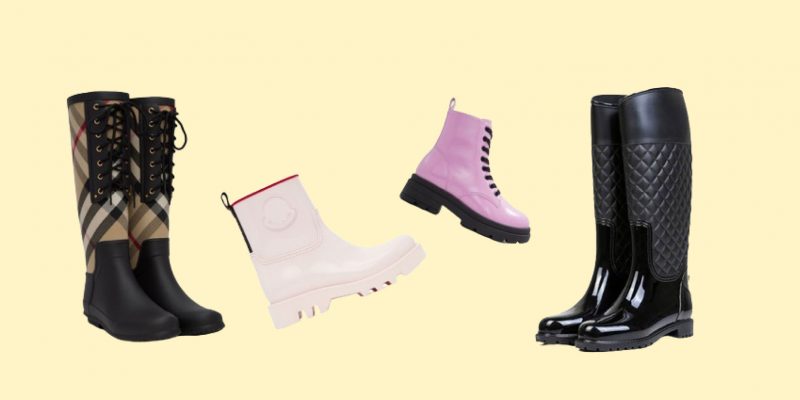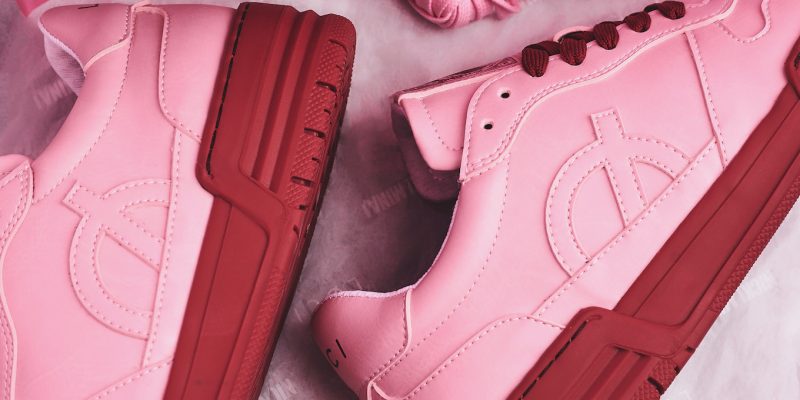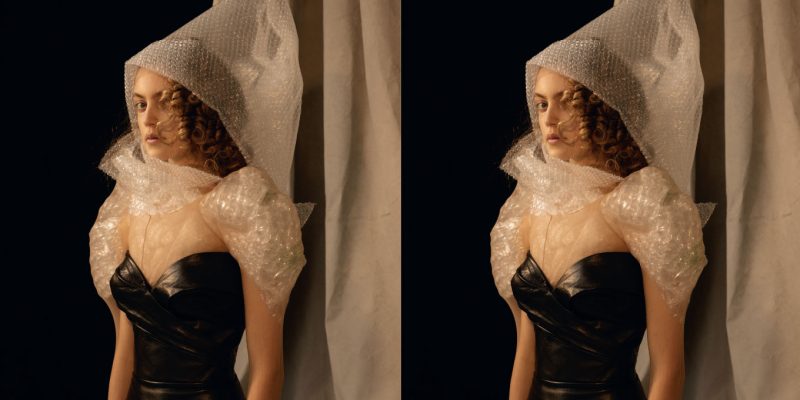Trends
The Padded Shoulders Trend Is the Ultimate Feminist Statement
It's the desire to pivot from power girl to lover girl.
by : Caia Hagel- Sep 28th, 2022
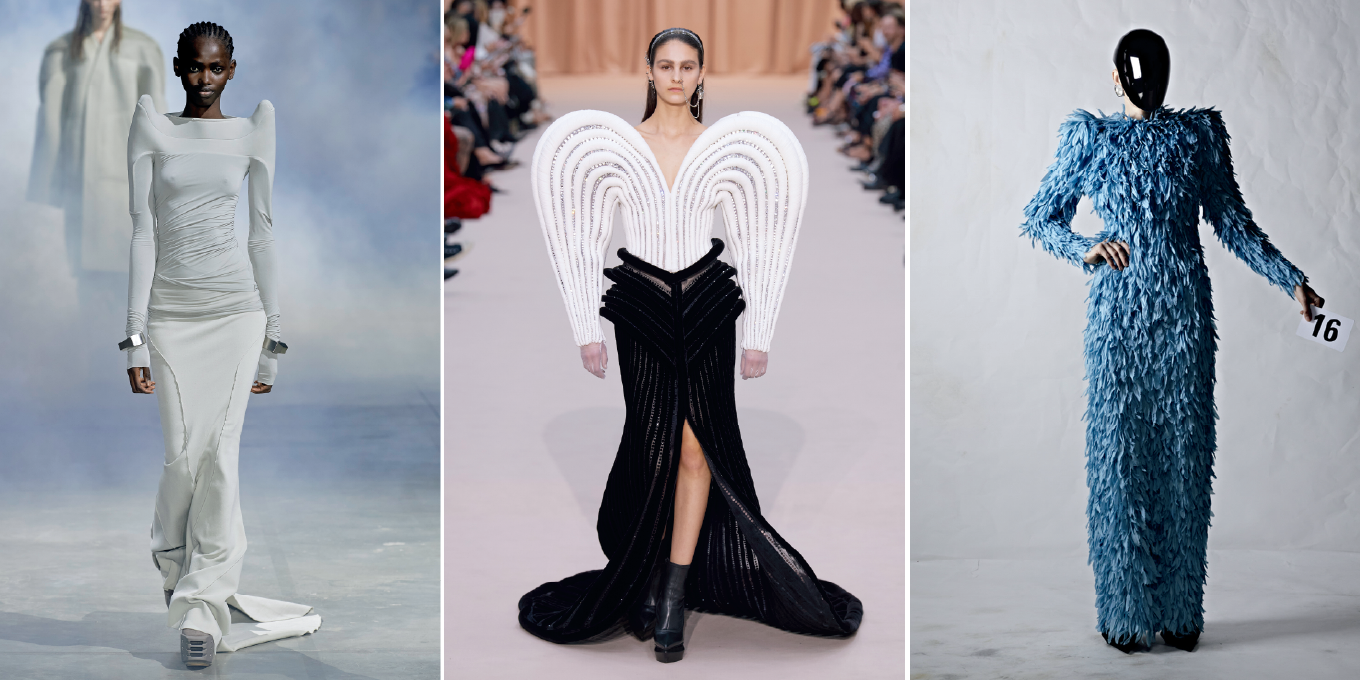
Imaxtree
The padded shoulder—a symbolic motif in fashion that’s closely tied to the history of the women’s movement—has been morphing over the past few seasons. It’s gone from big and square to an ascending conical shape so extreme that it feels like a church bell, thanks to forward-thinking designers like Rick Owens, Demna Gvasalia and Rei Kawakubo. If Viktor & Rolf’s Viktor Horsting and Rolf Snoeren gave the feature its most hyperbolic expression, glamorizing the gothic and making the office suit appear unseemly and monstrous, then Marc Jacobs echoed that design with softer, rounder, out-of-proportion silhouettes in his fall/winter 2022/2023 collection, at the presentation of which Bella Hadid stunned in avatar hair, sky-high platform heels and a shiny black dress with dramatically bulbous shoulders.
The gigantic shoulder was seen in several other collections too: at Giambattista Valli couture, where it was angelic and tailored in tulle and cotton; at Balenciaga couture, where it was bubble-shaped and crafted in latex; and at Gaultier couture by Olivier Rousteing, where it had a gladiator aura. The Moschino couture campaign, shot by Steven Meisel, featured some of the most supreme shoulders ever seen in fashion—they were large and as pointy as pyramids. In a fashion moment that reflects the melancholic feelings of a post pandemic world and the mournful emotions of war, there is also a playfulness to this funny armour—a longing for release from the seriousness and toil of economic, political and actual survival into the gentleness of femininity and its lesser known darker, sensual side.
Originally invented by a Princeton University student in 1877 for American football players, the shoulder pad first appeared in women’s fashion in the late 1930s. The Second World War was breaking out, women were being sent to work and Elsa Schiaparelli wanted to give volume to that area of a woman’s body in a way that mimicked a man’s broad shoulders; she wanted to help women project power. “In difficult times, fashion is always outrageous,” she said, foreshadowing the fact that magnified shoulders would appear at key moments of political and social change for women.
The accentuated shoulder appeared again when the feminist movement took on vigour in the early 1960s, and in 1966, Yves Saint Laurent scandalized the couture world with the Le Smoking. By borrowing and translating the strong-shouldered jacket and pants of a masculine suit—the symbol of male power—and allowing women to wear it, said Saint Laurent, “I conferred the attributes of one gender to another. I always wanted to put myself at the service of women. I wanted to accompany them in the great movement for liberation.” This trend accelerated in the ’80s and was immortalized by Margaret Thatcher, the Iron Lady herself, as the power-dressing uniform now synonymous with girl-bossing. The Jean Muir skirt-suits with shoulder-padded blazers she favoured helped her visually assimilate with the men she worked alongside and distance her femininity from her public office. “People expect me to dress like an executive, and so that is what I do,” she said.
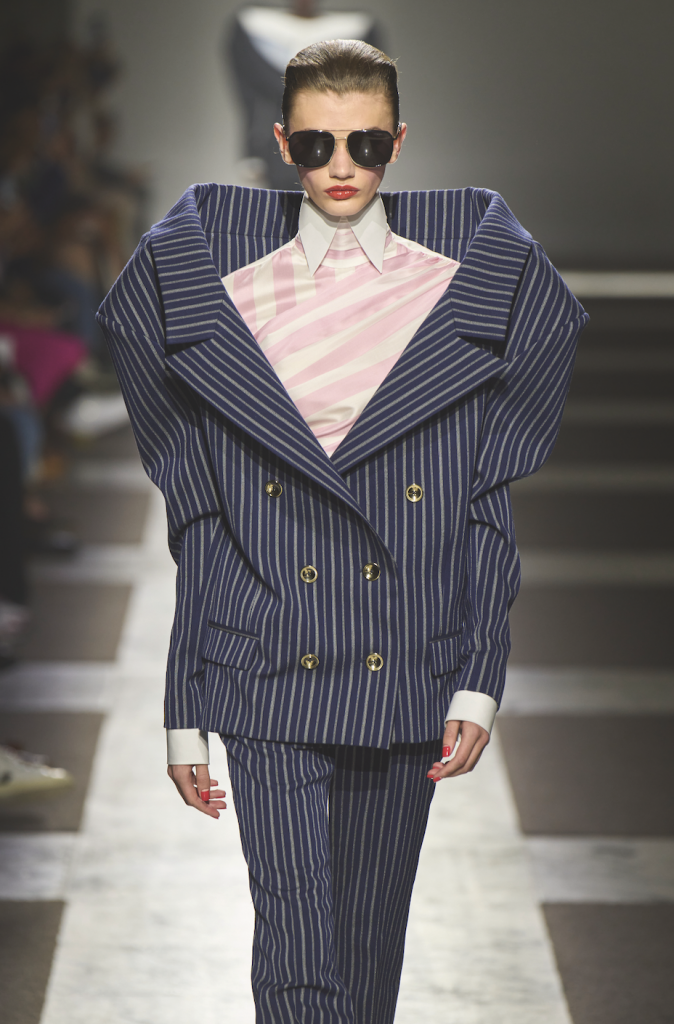 Imaxtree
ImaxtreeForty years later, the shoulder pad has mutated into the “horror shoulder,” a vertical conical shape suggestive of wings or horns. It is futuristic but also ancient, and it seems to embody a feminine fertility. It poses the questions “If women have achieved financial independence and acquired leadership roles, what secret force of their femininity wants to awaken now from deep inside the mighty shoulder pad?” and “If women work hard to earn accolades but many eat alone or don’t have anyone to call on to feed their cat when they’re away, has the drive for success turned into a desire to—at least for a little while—swap power for love?”
According to art director, creative consultant and social-media influencer Willy Ndatira, Rick Owens’ “neo-primitive” version of the horror shoulder, which is cone-shaped to resemble a magical outgrowth on the body, over the past few seasons “brings back a certain primitivism, the idea of rituals and abject bodies, an anti- or post-capitalist relationship to bodies.” The shape of the new vertical shoulder reminds him of bat wings, insects and nature. “[It references] a future where humanity has finally lost its ego and remembered that we are a very intelligent animal with a long history outside the economic machine,” says Ndatira. “It’s as if Owens asks ‘What would our relationship to our bodies be without advertising?’” In becoming a caricature, his shoulder is perhaps asking the same question Beyoncé poses in her recent release “Break My Soul” (touted by music critics as a brilliant anti-capitalist hymn), about how we can protect our bodies, our souls and our ability to love—the things most important to us—in a marketplace that pits us against them.
The horror shoulder alludes to haunting too and what we discard in order to achieve progress. Viktor & Rolf’s fall/winter 2022/2023 couture collection saw it collapse into a softer silhouette, reflecting what Snoeren said was the evolution of “a masculinity that doesn’t fit.” For the final look of their runway show, the design duo removed the gigantic shoulders from the model and instead gave her voluptuous sleeping shoulders resembling a giant who has given up a Herculean struggle and fallen into a longed-for lucid dream. According to relationship guru Esther Perel, who invented the concept of erotic intelligence, the most important aspect of creating healthy, satisfying, long-lasting relationships is “bodily attunement.” This is something that being predominantly online and swiping for love on dating apps in an era of accelerated girl bossing severely impedes. The new woman has earned all that she has worked for—from equal rights to equal pay—during the power dressing period. The dark femme emerging from beneath the surreal shoulder is coming alive now, and she wants to know more about love.
Newsletter
Join our mailing list for the latest and biggest in fashion trends, beauty, culture and celebrity.
Read Next
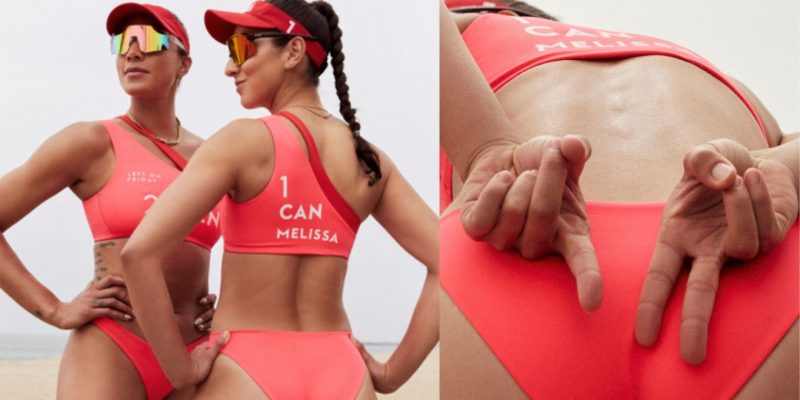
Fashion
This Canadian Swimwear Brand Designed Canada’s 2024 Women’s Olympic Beach Volleyball Team Uniforms
And they're *so* good.
by : Allie Turner- Apr 24th, 2024
Fashion
The Most Iconic Looks In Met Gala History, From 1973 To Now
40 years of the night that's all about trailblazing fashion.
by : ELLE Australia- Apr 24th, 2024

Culture
This University Elevates Women to New Professional Heights
You shouldn’t have to pause your life to move forward in your career.
by : ELLE Canada- Apr 16th, 2024

